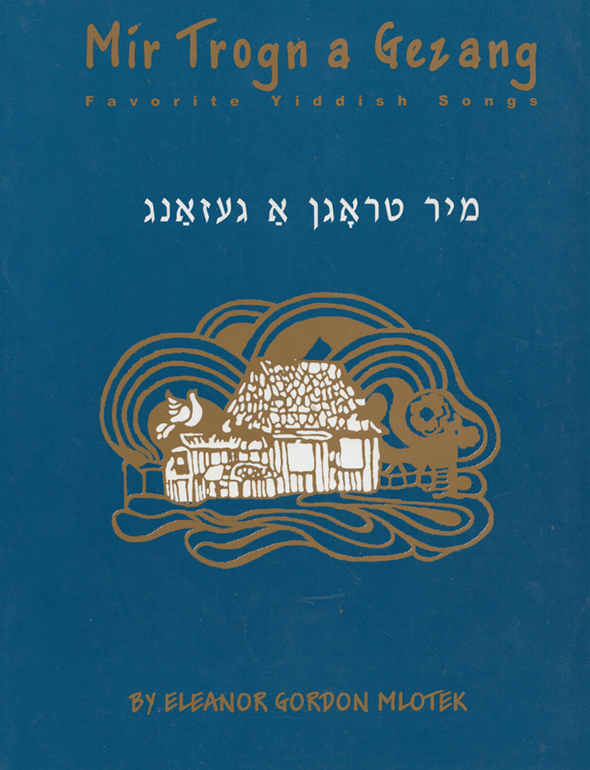Folk song published by Y.L. Cahan in 1912. In some versions there are stanzas in Ukrainian.

On the mountain, above the mountain
doves are flying in pairs;
I have not had any joy,
and my young years are gone.
Come, brother, harness the black horse,
and let us travel at a run.
Maybe I will yet catch up
to my young years.
I met my young years
on a broad bridge,
“Years, years, turn around
even just for a visit.”
“No, no, we will not go
there’s no one there to go to;
You should not have
shamed us in your youth.”
Oyfn barg, ibern barg
Flien toybn porn;
Kh’hob nokh keyn nakhes nit gehat,
Avek mayne yunge yorn.
Shpant zhe, brider, di shvartse ferd,
Un lomir loyfn, forn;
Efsher vel ikh nokh deryogn
Mayne yunge yorn.
Kh’hob bagegnt di yunge yorn
Oyf dem breytn brik,
— Yorn, yorn kert zikh um
Khotsh in gest tsurik.
— Neyn, neyn, mir veln nit geyn,
S’iz nito tsu vemen;
Hostu undz nit gezolt
Yungerheyt farshemen.
אױפֿן באַרג, איבערן באַרג
פֿליען טױבן פּאָרן;
כ’האָב נאָך קײן נחת ניט געהאַט,
אַװעק מײַנע יונגע יאָרן.
שפּאַנט זשע, ברידער, די שװאַרצע פֿערד,
און לאָמיר לױפֿן, פֿאָרן,
אפֿשר װועל איך נאַך דעריאָגן
מײַנע יונגע יאָרן.
כ’האָב באַגעגנט די יונגע יאָרן
אױף דעם ברײטן בריק,
— יאָרן, יאָרן, קערט זיך אום
כאָטש אין געסט צוריק!
–נײן, נײן, מיר װעלן ניט גײן,
ם’איז ניטאָ צו װעמען:
האָסט אונדז ניט געזאָלט
יונגערהײט פֿאַרשעמען.
Song Title: Avek Di Yunge Yorn

First published in 1972, Mir Trogn A Gezang: Favorite Yiddish Songs was reprinted six more times (in 1977, 1982, 1985, 1987, 1988, 2000) due to popular demand. The songs in this anthology represent a sampling of beloved folk and well-known Yiddish songs, many of which are scattered in various song collections; some appear in very rare and inaccessible collections; and some were never before published. Folk songs comprise about a third of this volume and were selected mainly on the basis of popularity and sometimes for their historic significance. Needless to say, they are only representative of the vast, rich treasure of Yiddish folk material. The selection was made not only on the basis of personal preference, but in the knowledge they are favorites of many who sing these songs. Most of the songs represent the repertoire that was sung at Yiddish summer camps, May 1st demonstrations and at social gatherings. Many songs were introduced to American Jewry by Jewish immigrants who came to the United States after World War II, for whom these songs had been favorites in Poland and other East European communities destroyed by the Nazis.